57-mm anti-tank gun ZIS-2
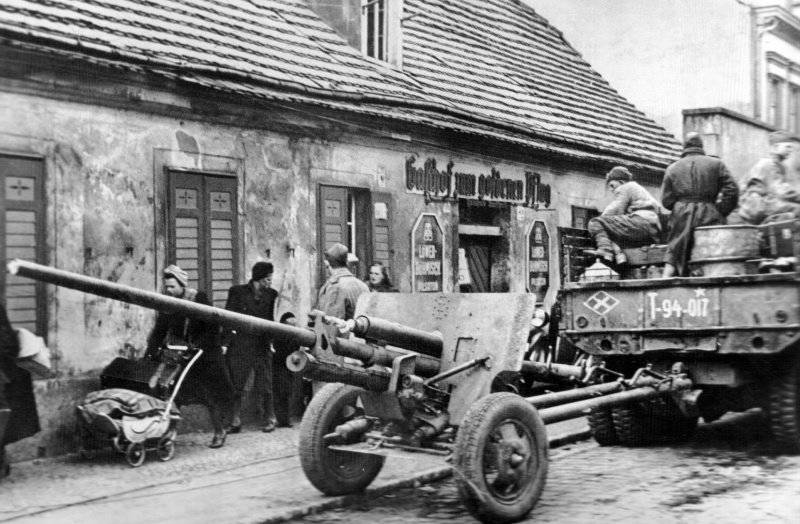
In parallel with this, in May of the 40 of the year, Grabin begins to design a new powerful X-NUMX-millimeter anti-tank gun F-57. It is curious that the technical specifications for the design and manufacture of a prototype 31-mm anti-tank gun Grabin received only 57, when the design and manufacture of a prototype were in full swing.
When designing the ZIS-2, the design-technological scheme of the F-76 24-millimeter regimental gun was taken as the basis. This approach allowed to proceed immediately to those. project and working drawings. The design of the F-24 cannon, which showed high quality during the field tests, almost completely met the tactical and technical requirements put forward to the new 57-mm anti-tank gun. In addition to replacing the 76-mm tube with the 57-millimeter, only some mechanisms were required for radical processing, among which were the nakatnik (the ZIS-2 needed to be installed above the barrel, while the F-24 had it under it). Reducing the angle of vertical guidance to 25 ° (from 65 ° in F-24) made it possible to use a rollback brake having a constant rollback length in the new gun, which greatly simplified the task. The regimental cannon was equipped with folding coulters, while the ZIS-2 was fixed, which made it possible to reduce the transition time between marching and combat positions.
For ZIS-2, an armor-piercing projectile with a mass of 3,14 kg was adopted with an estimated initial speed of 1000 m / s. It was decided to use the sleeve from the 76 – mm divisional gun with re-compression of the sleeve sleeve from 76 to 57 mm. Thus, the sleeve is almost completely unified.
In October, 1940 of the plant No. 92 finished the prototype of the F-31 gun, and Grabin began his factory tests.
At the beginning of 1941, the factory index F-31 of the new 57-mm anti-tank gun was replaced by ZIS-2. This was due to the assignment of the plant number 92 them. Stalin.
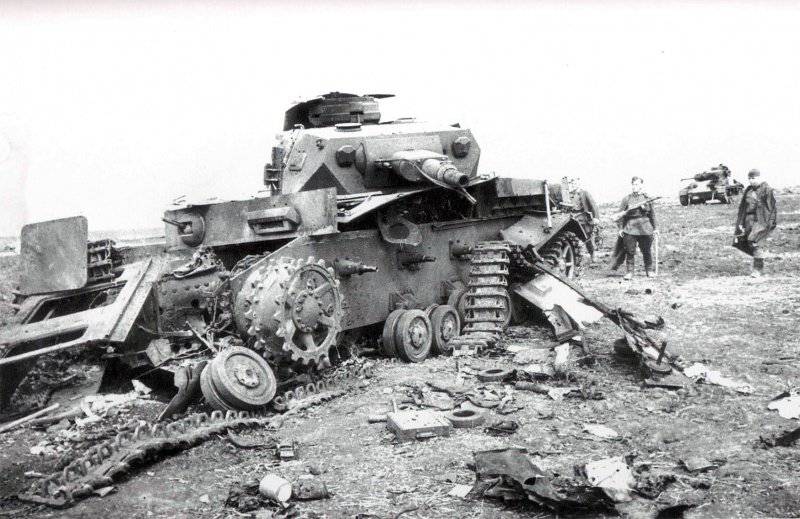
At the beginning of 41, the ZIS-2 gun was adopted under the name "57-mm anti-tank gun of the 1941 model of the year."
Interestingly, Grabin in parallel with the ZIS-2 created a more powerful 57-millimeter anti-tank gun ZIS-1KV. Its design was completed in December of 40. ZIS-1KV designed for caliber projectile weighing 3,14 kg under the initial speed of 1150 meters per second. The length of the barrel increased to 86 gauges (4902 mm). The top machine gun, gun carriage and sight for the ZIS-1KV gun were taken from the X-NUMX-millimeter divisional gun F-76USV.
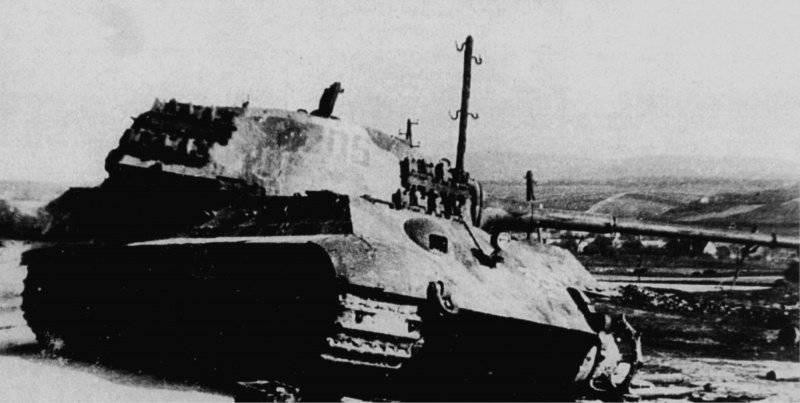
Although Grabin tried to reduce the weight of the gun carriage, the weight of the new 57-mm anti-tank gun was 30 kg more than the mass of the F-22USV (approximately 1650 kg). In January, the 41 of the year the ZIS-1KB prototype was completed, and in February-May of the same year its ground tests were completed. Naturally, the survivability of the gun with such a ballistics was low. In the book "Weapon victories "Grabin wrote that the initial speed after 40 shots decreased sharply and accuracy became unsatisfactory. After 50 shots, the state of the barrel became such that the projectile stopped "spinning" in the barrel and simply tumbled during the flight. This experiment marked the limits of the capabilities of 57-millimeter anti-tank guns.
It should be noted that Grabin simplifies the situation, and the situation with the survivability of the ZIS-1KV was in fact not so deplorable. Further work on this gun was stopped due to the start of mass production of the ZIS-2.
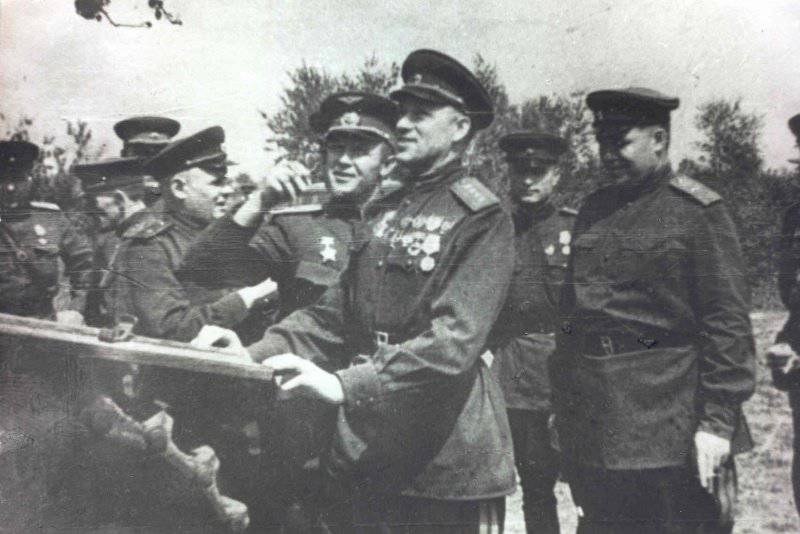
The mass production of ZIS-2 started on 1 on June 1941 of the year, and it was suspended on 1 of December of the same year. During this period, the 371 gun was produced. Production of ZIS-2 suspended for many reasons. The main one was the lack of worthy targets on the battlefield. Even at distances greater than 1500, the cannon easily penetrated the armor of any German tanks. In addition, the production of 57-millimeter shots was bad, and there was a risk that the ZIS-2 would simply be left without ammunition. Recall that after 1917 g. 57-millimeter cannons and shells in the USSR were not made. At the end of 1941, some figures from the GAU scolded 57 millimeter shells for small fragmentation. Finally, there were significant technological difficulties in manufacturing a barrel of this length (73 caliber).
In response to the last accusation, Grabin, after having removed the ZIS-2 from production, began to design a new 57-mm anti-tank cannon EC-1, which in fact was a ZIS-2 with a trunk shortened to 10 (up to the 63,5 club). The mass of the trunk has decreased slightly (to 317,5 kg), the internal structure of the trunk and its cutting remained the same. 6 June 1942, the prototype of the EC-1 was transferred for ground tests at the Gorokhovetsky landfill.
However, the anti-tank gun EC-1 did not enter service, however, Grabin himself and the Red Army only benefited from this. With the advent of the Germans tanks "Panther" and "Tiger" urgently needed powerful TAP.
15 On June 43 of the year, the ZIS-2 gun was again adopted, however, now under the name "57-mm anti-tank gun of the 1943 model of the year." A few weeks later the gun began to enter the troops.
Production of 57-mm guns ZIS-2 (Table. 38)
In 1950-1951, only ZIS-235 barrels were manufactured at plant 2, and in 57, the ZIS-2 guns at the factory began to be redone in ZIS-2Н.
At plant number 235 in 1948, they attempted to modernize ZIS-2. A new anti-tank gun was assigned a factory index B-22. In 1948, the plant No. 235 produced a prototype. After the factory tests in the scope of the 1000 km and 315 shots were carried out, the gun was allowed to be tested. The B-22 gun in the summer of 1949 was tested on the ANIOP. B-22, according to the landfill report, needed an increase in clearance for the coulters and finalizing the recoil devices. Concerning the financing of work on B-22, a dispute arose between the GAU and the plant, and at the beginning of 50, B-22 was excluded from the ROC plan.
Device gun ZIS-2
In 1941, two types of barrels were made - with a free pipe and a monoblock. Starting with 1943, only monoblocks were manufactured.
Vertical wedge gate with semiautomatic copying (mechanical) type.
Knuckle hydropneumatic, hydraulic recoil brake. The recoil devices are rolled away with a barrel when fired.
The lifting mechanism is two-sector. Rotary mechanism - push type screw.
The balancing mechanism of the spring type consisted of a pair of columns that were placed in the pipes of the upper machine.
Most of the ZIS-2 beds of the 1941 model were box-shaped, although tubular beds were also encountered. Since 1943, exclusively tubular beds have been manufactured.
On the gun mounted wheels from GAZ-AA. Suspension - spring. The combat axis is straight.
For the 57-mm guns of the 1943 model of the year, a unified front end of the 1942 model of the year from 76-millimeter field and divisional guns was used. In the front end box, there were 6 trays for the 24 cartridge. The weight of the system with the front end was about 1800 kg.
The 57 mm ZIS-2 gun was equipped with a PP1-2, OP2-55, OP4-55 or OP4М-55 optical sights.
Apart from the optical sight OP2-2, OP55-4 or OP55М-4, the ZIS-55H gun was equipped with the APN-57 or APNZ-55 night sight.
In March, 58 began to develop 57-millimeter rotating cumulative projectiles for ZIS-2, H-26 and H-51. Data on the adoption of cumulative shells into service the author does not have.
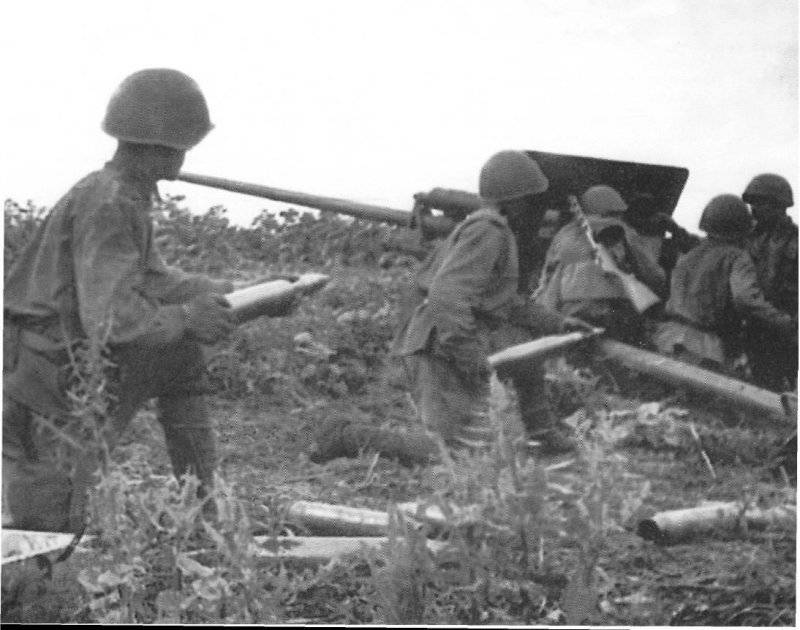
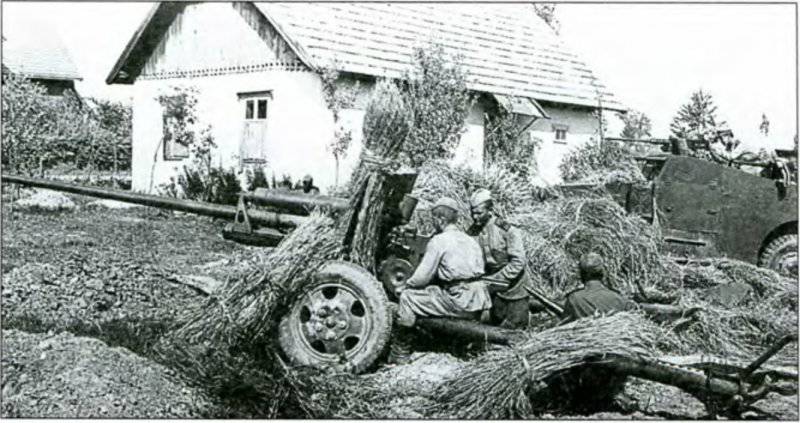
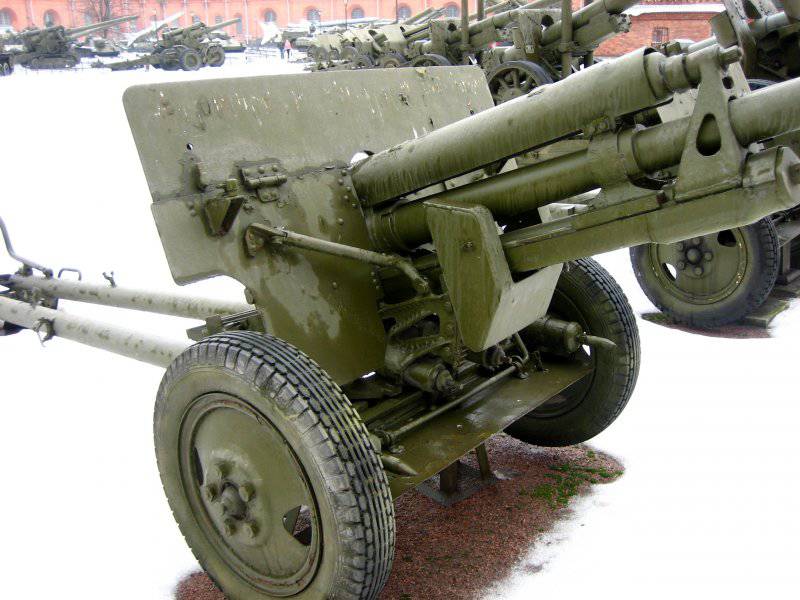
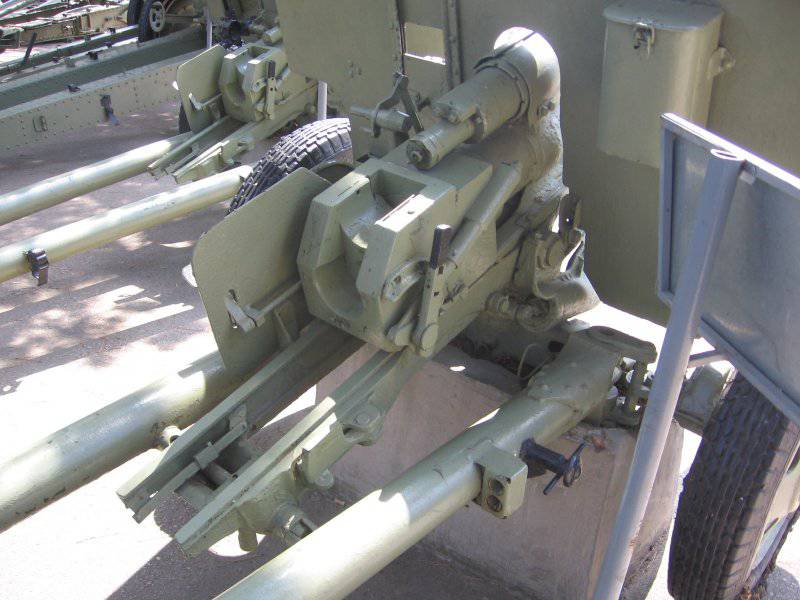
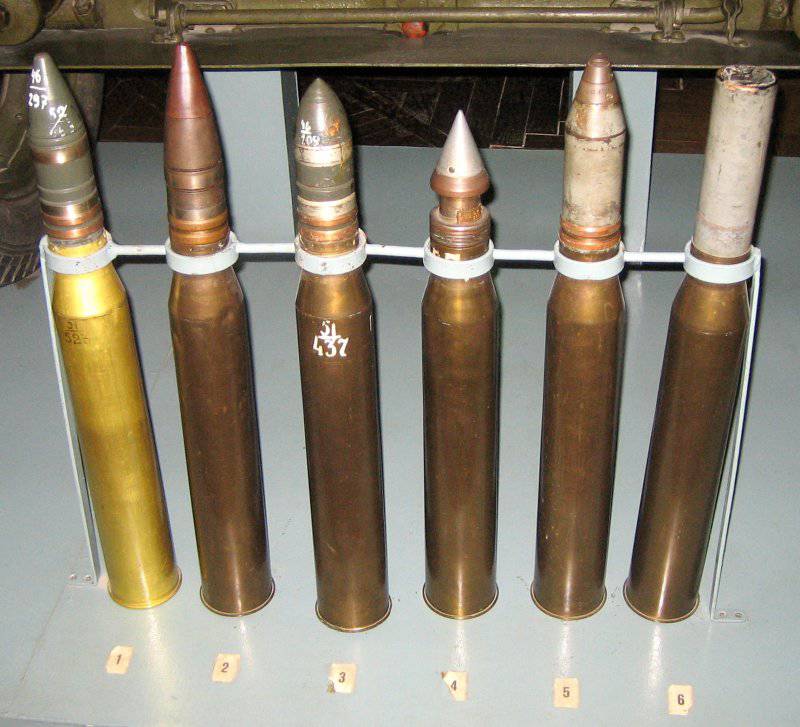
Information